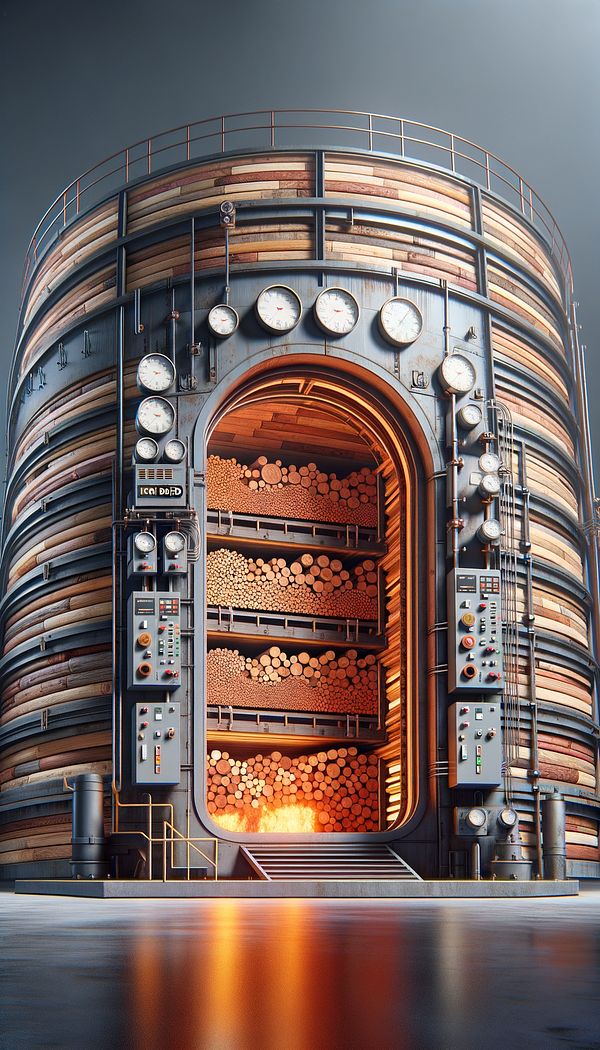What is Kiln Dried?
Kiln drying is a process of removing moisture from wood by using a kiln.
Description
Kiln drying is a vital process in the preparation of wood for various uses, including interior design projects. By placing wood in a specially designed oven known as a kiln, the moisture content is carefully reduced to a desirable level. This controlled environment allows for precise management of temperature, humidity, and air circulation, ensuring that the wood dries evenly and minimizes the risk of defects such as warping, cracking, or splitting.
The goal of kiln drying is to bring the wood’s moisture content in line with the expected conditions of its final use, which helps to ensure stability and longevity in products like furniture, flooring, and architectural elements. It’s a key step in the wood preparation process, as it strengthens the wood and makes it less susceptible to environmental factors. Moreover, kiln-dried wood is less likely to harbor pests, mold, or fungi, making it a safer and more durable choice for interior spaces.
There are different types of kilns and drying processes, each suited to specific types of wood and desired outcomes. The duration and conditions of the drying process can vary significantly, depending on the species of wood, its initial moisture content, and the required final moisture content.
Usage
Kiln-dried wood is extensively used in the interior design industry for making furniture, flooring, and structural elements like beams and posts. It's particularly favored in projects where stability, durability, and resistance to environmental factors are paramount. For example, kiln-dried hardwood might be chosen for high-quality furniture pieces or flooring in areas with fluctuating humidity levels. Moreover, the use of kiln-dried wood aligns with sustainability practices, as it ensures the efficient use of resources by reducing waste and enhancing the lifespan of wood products.
FAQs
-
How long does the kiln drying process take?
The duration of the kiln drying process can vary widely from a few days to several weeks, depending on factors such as the type of wood, its initial moisture content, and the desired final moisture content.
-
Is kiln-dried wood more expensive than air-dried wood?
Yes, kiln-dried wood generally tends to be more expensive than air-dried wood due to the additional processing, energy costs, and the controlled environment required for drying.
-
Does kiln drying affect the color of the wood?
Kiln drying can sometimes affect the color of the wood, leading to a slight darkening or uniformity in color, depending on the wood species and the specifics of the drying process.
-
Is kiln-dried wood better for the environment?
Kiln-dried wood can be seen as more environmentally friendly because it ensures the efficient use of wood resources, reduces the likelihood of waste, and extends the life of wood products.
-
Can all types of wood be kiln dried?
While most types of wood can be kiln dried, the specifics of the process, such as temperature and duration, need to be adjusted based on the wood species and intended use.
Practical Application
When selecting wood for interior design projects, it's important to inquire about the wood’s drying process. Opting for kiln-dried wood can significantly enhance the durability and stability of the finished product. Additionally, understanding the specifics of the kiln-drying process can help in making informed choices about the type of wood to use for different applications, balancing factors like cost, environmental impact, and the desired aesthetic.
-
Furniture Types599 articles
-
Fabrication & Craftsmanship133 articles
-
Materials & Textiles360 articles
-
Construction & Building86 articles
-
Sustainability & Eco-Friendly Design69 articles
-
RécamierA Récamier is a type of chaise longue featuring a high, curved headrest and a lower footrest without a backrest.
-
Draught ChairA draught chair is a specialized type of office chair designed to provide ergonomic support and comfort at drafting tables or high desks.
-
EvoluteEvolute is a term primarily used in mathematics and architecture, referring to a curve generated from another curve.
-
Vegetable DyeVegetable dye refers to a natural dye derived from plants, including roots, berries, bark, leaves, and wood.
-
CrestingCresting is a decorative motif often featuring a series of repetitive shapes or forms.
